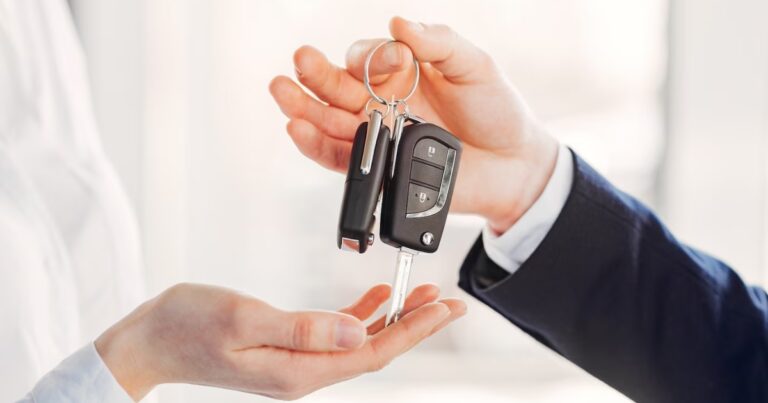When it comes to leasing a car, one of the most crucial decisions you will make is the length of the lease term. This is not a decision to be taken lightly, as it can significantly affect your financial health and personal convenience. Choosing the right lease term is a balancing act between monthly affordability, your long-term budget, and your lifestyle needs.
This topic is especially important because the term of your lease can influence the total amount you’ll spend on the car. It can also greatly affect how much you pay each month and determine your responsibility for maintenance costs.
So in this article we will take a look at the optimal term for a car lease with an example and real numbers to consider.
What is a car lease to begin with?
Leasing a car is like a long-term rental – you pay to use the vehicle for a predefined period and mileage. At the end of the lease, you usually have the option to buy the car or return it.
An optimal lease term can ensure you enjoy the benefits of driving a newer vehicle more frequently and can potentially lower your monthly payments. However, an ill-considered lease term can lead to higher costs and potential penalties. Therefore, understanding the economic rationale behind selecting the appropriate lease term is essential to make an informed decision.
When entering a car lease, you’ll encounter various term options, typically ranging from 24 to 60 months. Each term comes with its own set of pros and cons, influenced by the vehicle’s depreciation, your personal driving habits, and your financial situation.
What to consider first
A shorter lease term generally means higher monthly payments but less overall depreciation and lower maintenance costs since the car is newer. Conversely, a longer lease term will spread the payments out, making them more affordable month-to-month. But that usually results in higher total expenditure due to more significant depreciation and potential out-of-warranty repairs.
The economic rationale behind the term of a lease is deeply rooted in the concept of depreciation. A car loses value over time, and this depreciation is the largest cost in leasing. By choosing a term that aligns with the period of steepest depreciation, you can minimize the impact on your wallet.
Additionally, leasing for a term that matches your needs prevents paying for unused time or incurring penalties for early termination.
The impact of lease term on monthly payments
Monthly payments are a significant concern for many when leasing a car. These payments are directly affected by the term of the lease, making it essential to understand how the two are connected.
The basic principle is straightforward: the longer the lease term, the lower the monthly payment, as the cost of the car is spread over more months. However, this is not always the most economical option in the long run due to the cumulative effect of interest payments and potential higher maintenance costs for an older vehicle.
To determine the most economically sound lease term, one must calculate the total cost of the lease, including interest and any additional fees over the entire period. And then compare it against shorter-term options. This will help reveal the true cost of lower monthly payments in a longer lease term.
Depreciation and lease term
A car’s depreciation curve is steepest in the first few years. A lease term that coincides with this steep depreciation can result in higher lease payments. Conversely, extending the lease beyond this period means paying for the car as it depreciates more slowly. And that can lead to unnecessarily high total payments.
From an economic standpoint, it’s wise to choose a lease term that corresponds with the period just before the car’s value begins to stabilize. This allows you to take advantage of a higher residual value, thereby reducing your monthly payments.
Let’s look at an example
For the sake of better understanding, let’s take an example where a car costs 6000 EUR. So, for a car priced at 6000 EUR, a medium-term lease of 36 to 48 months might strike the best balance between affordable monthly payments and minimizing total expenditure.
This range often aligns with the warranty period, helping to reduce the risk of paying for major repairs.
Make sure to align lease term with personal circumstances
Beyond economic factors, personal circumstances significantly influence the ideal lease term. These include anticipated changes in lifestyle, driving patterns, and financial stability.
Assess your personal needs
Consider how long you’re likely to want the car. If you enjoy driving the latest models or your needs may change due to family or job circumstances, a shorter lease may be preferable.
On the other hand, if consistency is key and you prefer to avoid the hassle of frequent car shopping, a longer term might suit you better.
Where economic rationale meets personal preference
While the economic rationale is critical, aligning the lease term with personal circumstances ensures that the car lease supports your lifestyle without causing financial strain.
It’s about the intersection of economics and personal satisfaction.
In conclusion
Before deciding, evaluate the lease agreement’s terms, consider the total costs with an online lease calculator, and reflect on your personal needs and financial situation. The right choice will marry economic wisdom with personal well-being, allowing you to enjoy the benefits of the vehicle without undue financial burden.
And choosing the right lease term can profoundly impact your financial health and personal happiness. By taking a holistic approach that considers both economic principles and personal circumstances, you can find the lease term that best suits your needs and budget.
Check out our other articles here:
- How to Achieve Your Goals – The Path to Success
- Where to Get a Loan for Professional Development Courses
Best of luck with your car lease!
